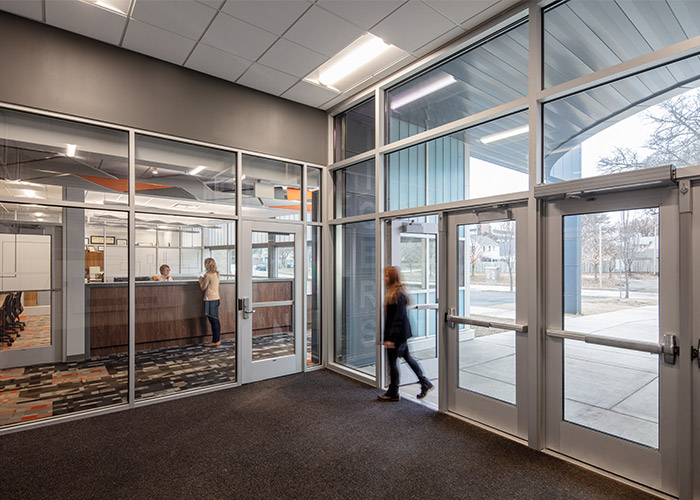Passive Ways to Improve School Security
When it comes to securing schools, finding the right balance between safety without sacrificing a welcoming and nurturing learning environment is critical.
When it comes to securing schools, finding the right balance between safety without sacrificing a welcoming and nurturing learning environment is critical.

When it comes to securing schools, finding the right balance between safety without sacrificing a welcoming and nurturing learning environment is critical.
The importance of security continues to take center stage as schools defend against things like vandalism, gun violence, and potential on-campus disagreements among parents and guardians – and communities are looking for ways to reduce crime and improve safety while maintaining a quality learning environment.
CPTED – the design concept of crime prevention through environmental design – creates a climate of safety through proper design and the use of passive elements in the built environment. For this reason, schools are starting to consider CPTED strategies to add another layer of security to their sites.
CPTED is achieved by focusing on five concepts:
CPTED Concepts to Reinforce on Your Own
When I first joined the professional world, I learned a valuable lesson while working at a resort. The owner made it a priority for someone – usually me – to walk her dog around the property daily before guests were up, making note of items to fix or clean (while picking up trash or righting a tipped trash can along the way).
That hands-on concept stuck with me – and it’s a great idea to implement in your school district: conducting regularly scheduled walks around your site. This is an efficient, effective way to identify security vulnerabilities and assess current security conditions.
During these walks, there are certain things to think about and look for. Based upon what you find, many of these changes or fixes can be addressed internally by you or a maintenance team member:
If anyone has been able to access your building before, think about how they gained access – and brainstorm ideas during your walk about what can be done to prevent a similar event.
Watch for any unusual activity. If you notice anything peculiar during your walks, it should be reported to local law enforcement. Make it a priority to conduct regular check-ins with them, and ask if they’ve seen unusual activity (or have received reports about unusual activity near the school).
When to Partner with a CPTED Expert
Sometimes during site walks, you may notice a potential problem that requires professional attention, or not repairable by your buildings and grounds department. In cases like these, consider enlisting the help of a trusted CPTED advisor. They can help you improve security through things like designing and installing new exterior lighting systems or creating a campus landscape design that enhances visibility, reduces maintenance requirements, and minimizes hiding spots.
A CPTED expert can also help you find corresponding school security technology – such as video surveillance and/or electronic access control – to provide another layer of safety to your school environment. If designed correctly, these systems can complement CPTED principles. For example, by creating as much natural surveillance as possible, you may be able to limit the number of surveillance cameras you need to place around your school.
If you implement regular site walkthroughs as part of your security plan, you’ll likely be able to implement many of the CPTED principles listed here on your own. Shive-Hattery can help you improve school security, prioritize initiatives to improve student and teacher safety, and create site-specific walkthrough plans you can conduct on your own